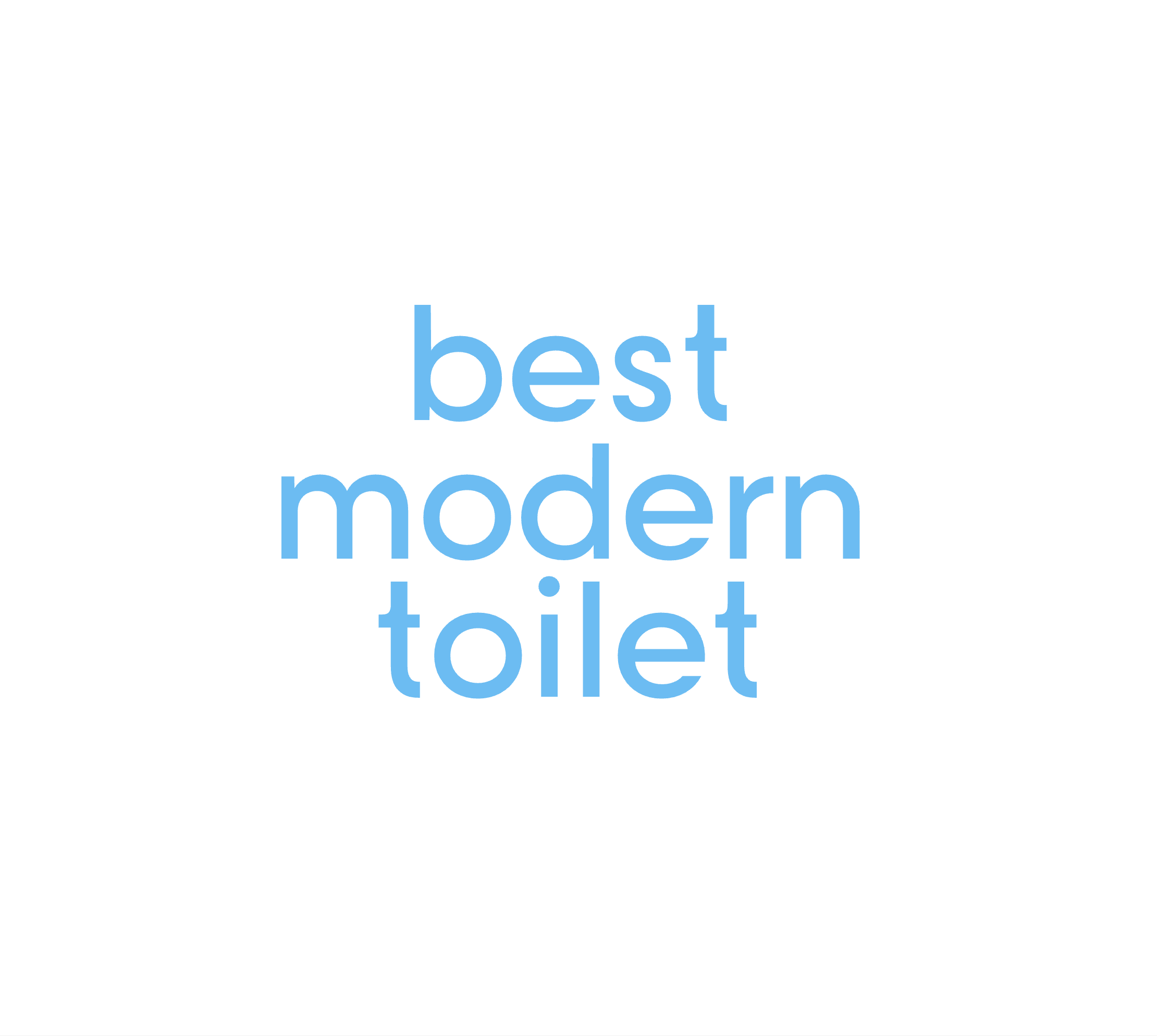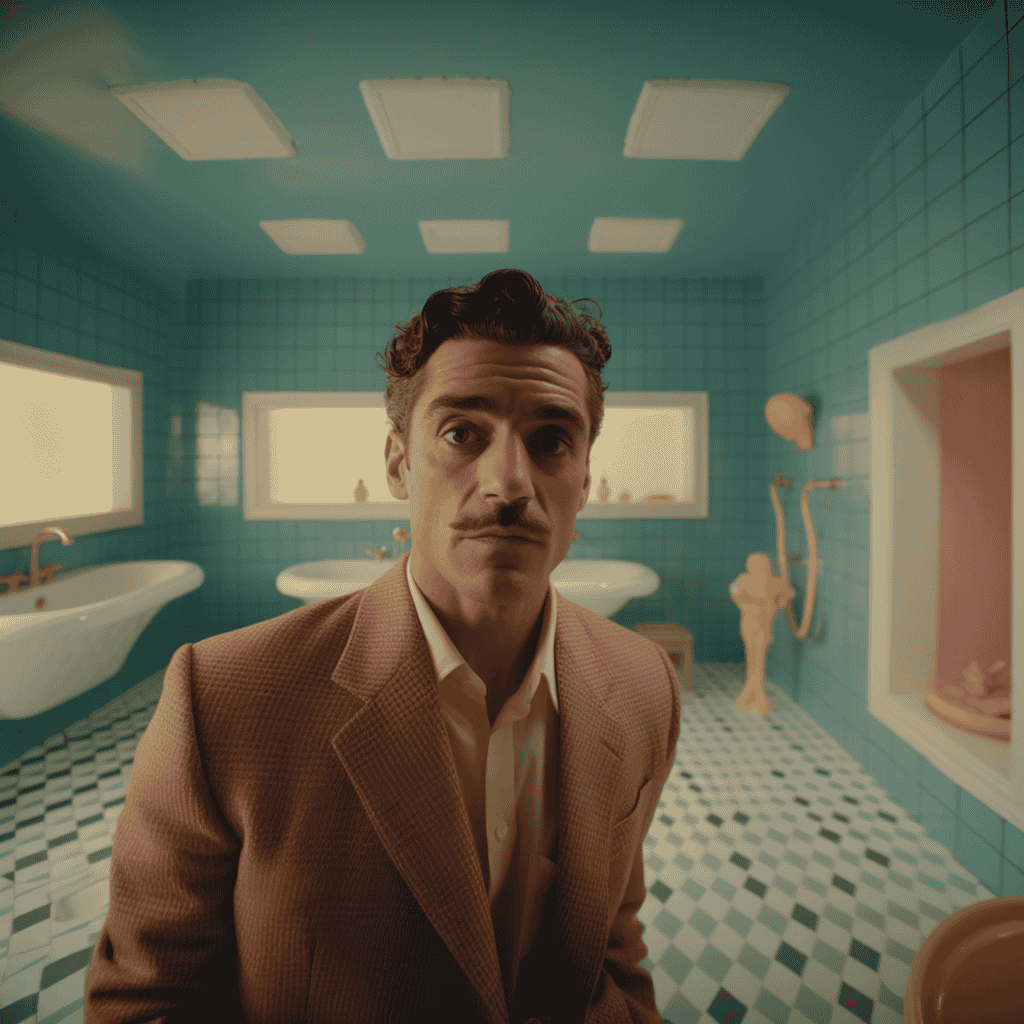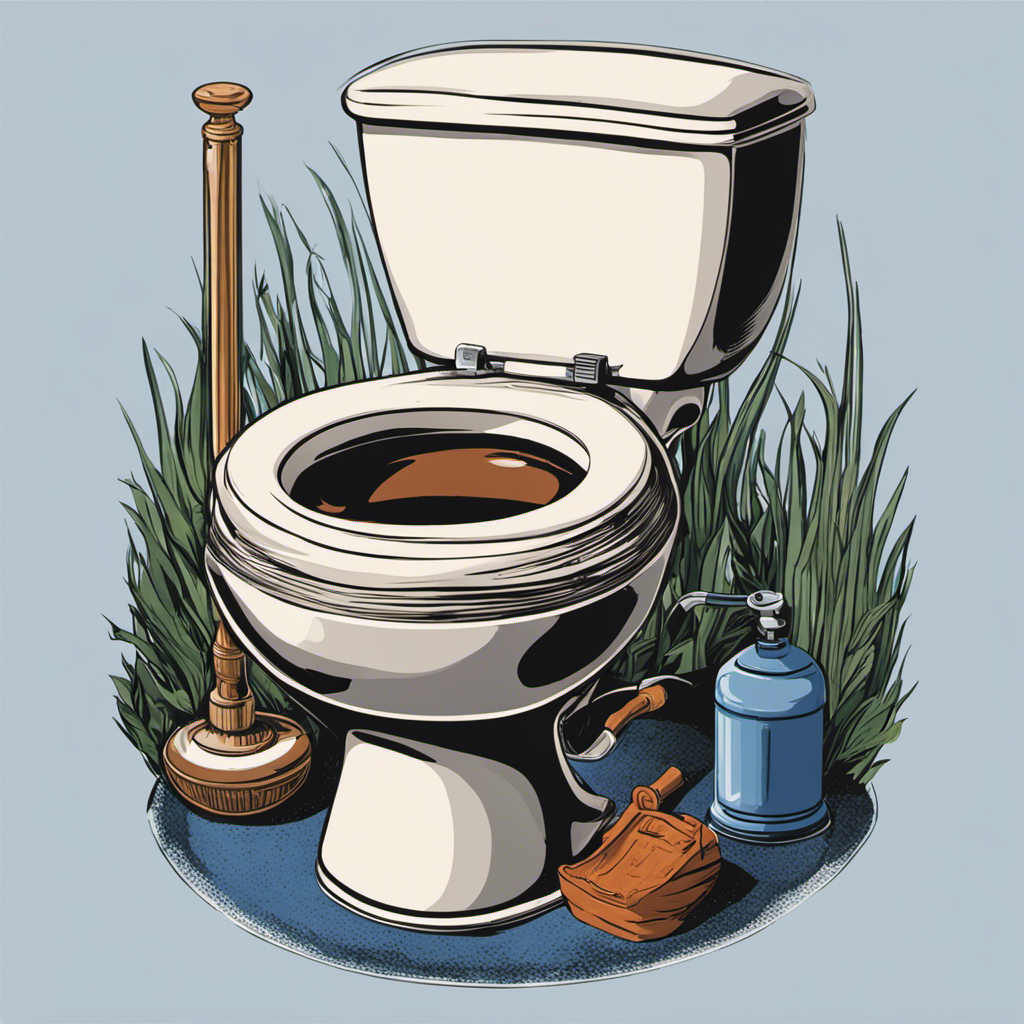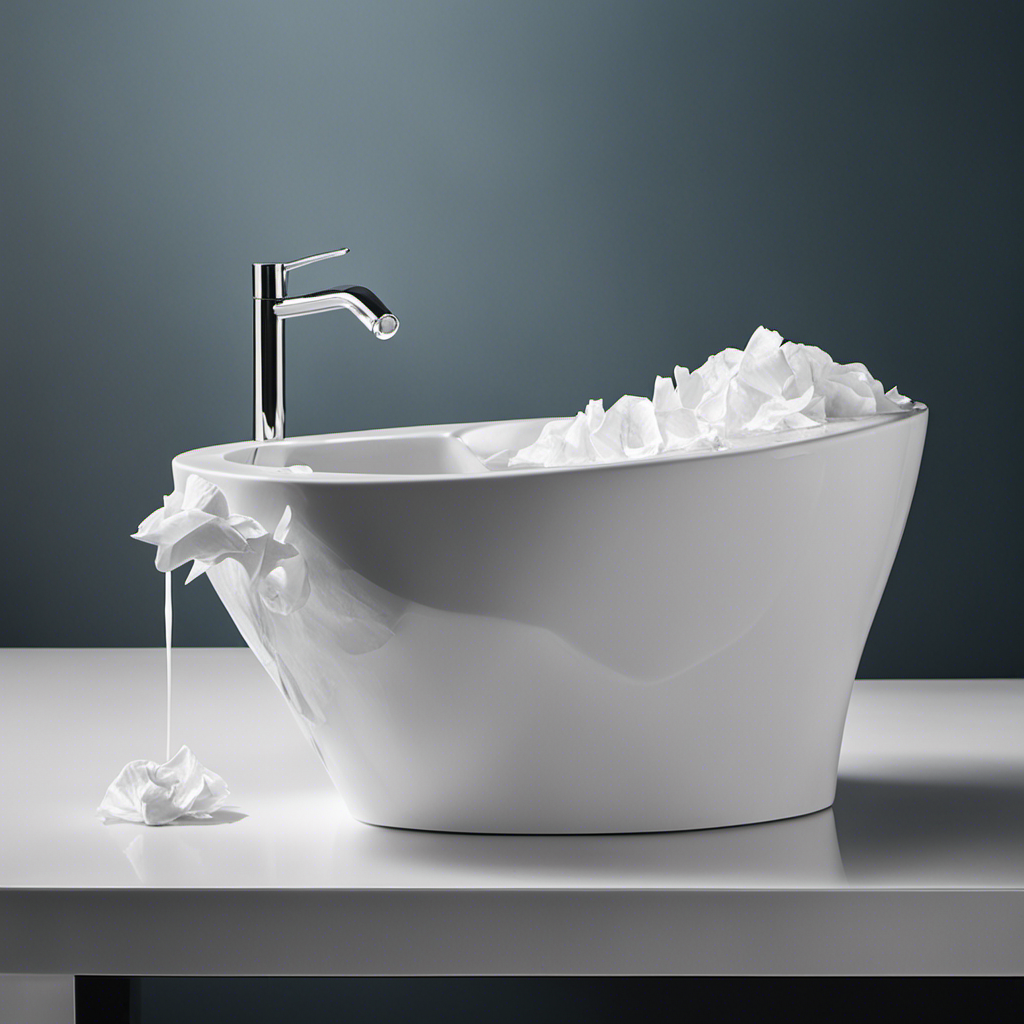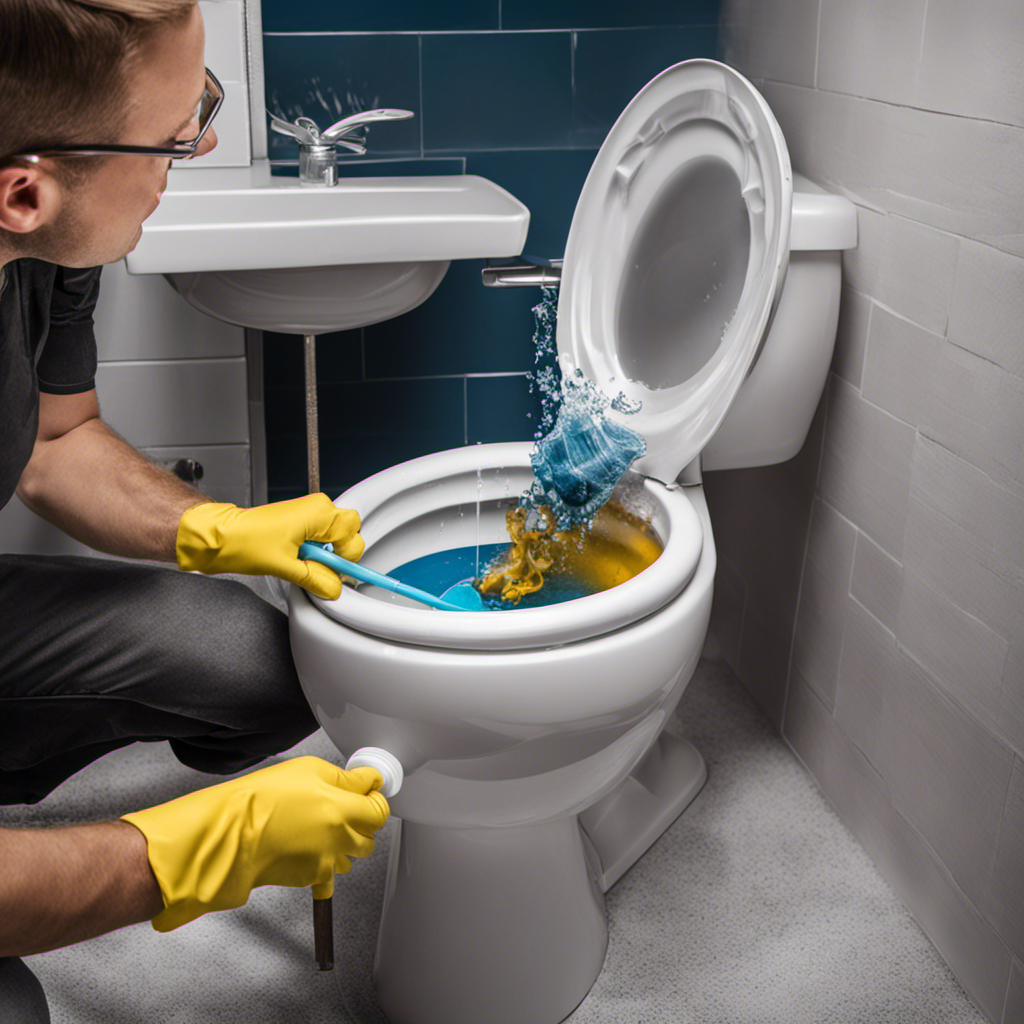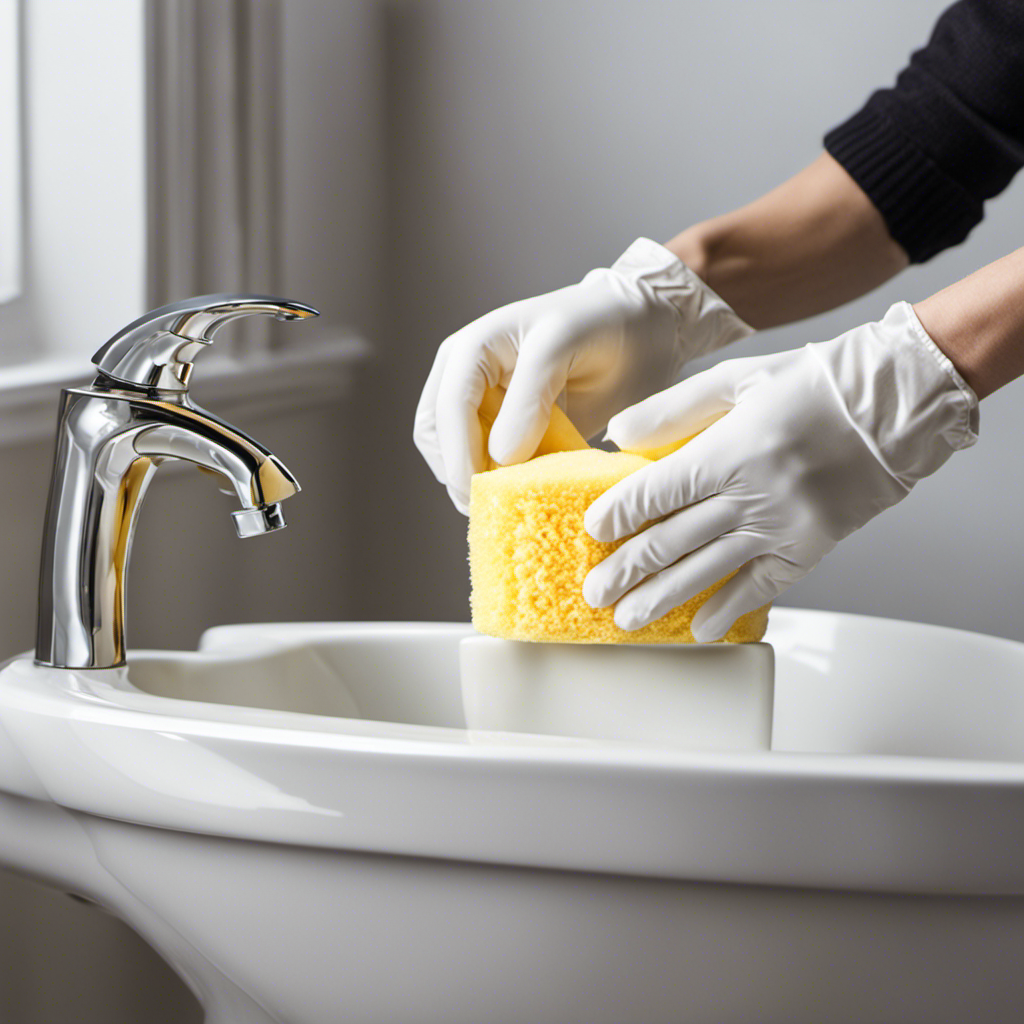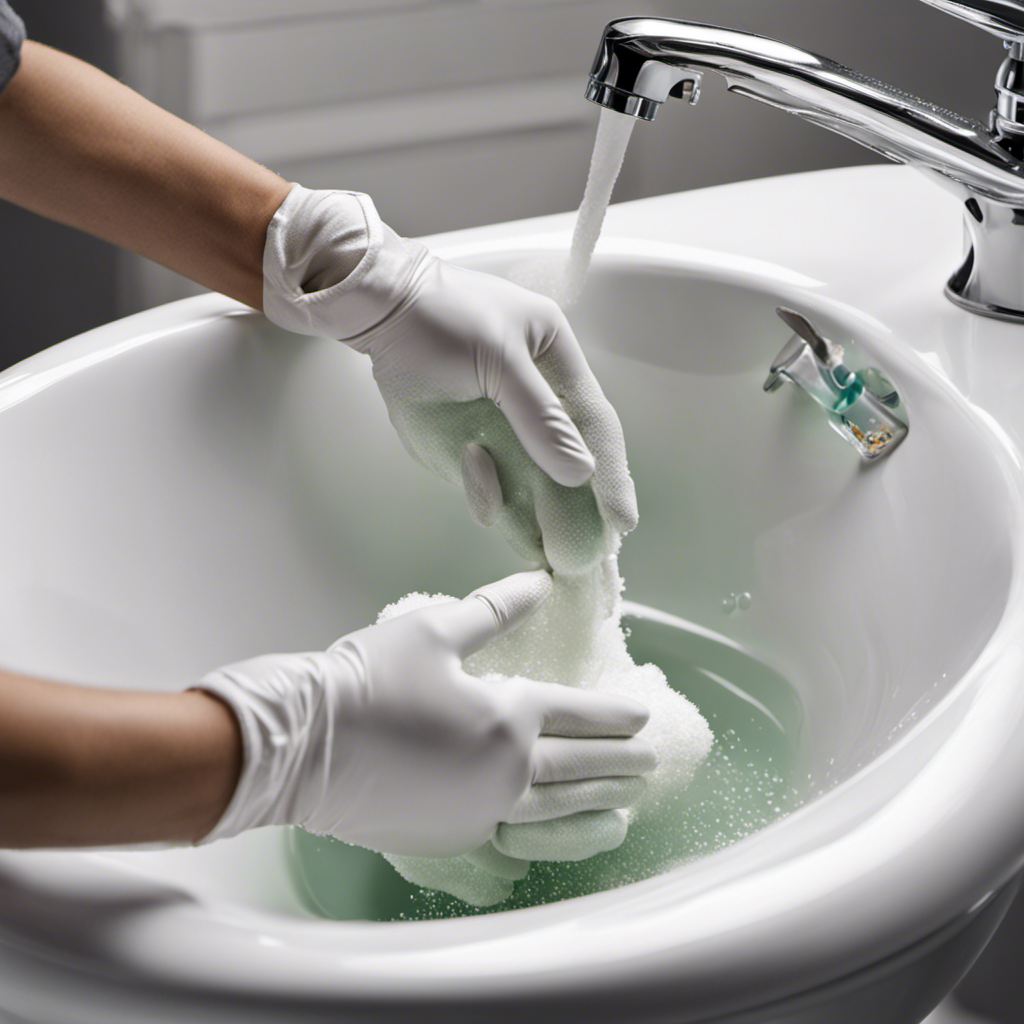FAQ - Advanced Bathroom Queries
Why Does My Toilet Keep Running Every Few Minutes

As a homeowner, it can be frustrating when your toilet keeps running every few minutes. It’s like a leaky faucet that never stops, constantly wasting water and increasing your utility bills.
In this article, I will delve into the common causes of a running toilet and provide you with detailed instructions on how to identify and fix the issue. From faulty fill valves to stuck flush handles, we will explore all the possible culprits and guide you on when it’s time to call in a professional plumber.
Let’s put an end to this never-ending water flow and restore peace to your bathroom.
Key Takeaways
- A running toilet can be caused by issues with the flapper valve or the fill valve.
- Common signs of flapper issues include constant sound, water leakage, high water bill, and discolored water in the bowl.
- Fill valve issues can result in clogged valves, continuous water leakage, and misaligned floats.
- It is important to troubleshoot and fix running toilet problems to prevent water wastage and potential damage to the bathroom.
Common Causes of Toilet Running
One of the most common causes of a toilet running every few minutes is a faulty flapper valve. The flapper valve is located in the toilet tank and is responsible for controlling the flow of water into the bowl.
When the flapper valve is faulty, it fails to create a proper seal, leading to water leakage. This leakage causes the toilet to constantly refill the tank, resulting in the running water sound that you may hear.
To fix this issue, you will need to inspect the flapper valve for any signs of damage, such as cracks or warping. If you notice any issues, it is recommended to replace the flapper valve with a new one to ensure a proper seal and prevent water wastage.
How to Identify a Flapper Issue
To identify a flapper issue, start by checking if there is a constant sound coming from the toilet. This sound is often a result of a faulty flapper, which is a rubber seal that controls the flow of water from the tank to the bowl. Flapper issues can cause your toilet to constantly run, wasting water and increasing your water bill. To determine if the flapper is the culprit, you can perform a simple test. Add a few drops of food coloring to the toilet tank and wait for about 15 minutes. If the water in the bowl changes color, it means that the flapper is not sealing properly and needs to be replaced. Regular flapper maintenance, such as cleaning and checking for damage, can help prevent these issues and ensure the efficient functioning of your toilet.
| Flapper Issue | Symptoms |
|---|---|
| Constant sound from the toilet | Flapper not sealing properly |
| Water constantly running | Flapper not closing properly |
| Water leakage around the toilet | Worn-out flapper |
| High water bill | Faulty flapper causing excessive water usage |
| Discolored water in the bowl | Flapper not sealing properly, allowing water to leak into the bowl |
Fixing a Faulty Fill Valve
I’ve encountered many fill valve issues during my years of plumbing work, and I understand the frustration they can cause.
Common problems include a noisy fill valve, a slow-filling toilet tank, or a valve that continuously runs.
To troubleshoot these issues, it’s important to check for a faulty float, debris clogging the valve, or a worn-out seal.
Fortunately, there are simple solutions like adjusting the float height, cleaning the valve, or replacing any worn-out components that can get your fill valve working optimally again.
Common Fill Valve Issues
There’s a common issue with fill valves that can cause a toilet to keep running every few minutes. This problem often arises due to certain fill valve issues.
Here are some common fill valve issues that can lead to a running toilet:
-
Clogged valve: If debris, sediment, or mineral deposits accumulate inside the valve, it can obstruct the water flow and prevent the valve from closing properly.
-
Worn-out seal: Over time, the rubber seal inside the fill valve can deteriorate, causing water to continuously leak.
-
Misaligned float: If the float is not properly aligned or adjusted, it may not trigger the valve to shut off, resulting in a constant water flow.
Understanding these common fill valve issues is crucial for toilet fill valve maintenance and troubleshooting toilet leaks. By addressing these issues promptly, you can prevent water wastage and potential damage to your bathroom.
Now, let’s move on to the next section and explore some troubleshooting and solutions for these problems.
Troubleshooting and Solutions
One way to troubleshoot common fill valve issues is by checking for clogged valves caused by debris or mineral deposits.
If your toilet keeps running every few minutes, it could be due to a problem with the fill valve. Start by inspecting the valve for any signs of clogging. Debris or mineral deposits can restrict the flow of water, leading to a constant running toilet.
To check for clogs, turn off the water supply to the toilet and remove the fill valve cap. Look for any obstructions and use a small brush or cloth to clean the valve.
Additionally, ensure that the toilet water level is properly adjusted and that the water pressure is adequate.
Adjusting the Float to Stop the Running
To stop the running, you should adjust the float in your toilet. The float is a small device that controls the water level in the tank. Here’s how you can do it:
-
First, locate the float in the toilet tank. It is usually a plastic or metal ball attached to a rod.
-
To adjust the float, bend the rod slightly downwards. This will lower the water level in the tank.
-
If bending the rod doesn’t work, you may need to replace the flapper. The flapper is a rubber valve that controls the water flow from the tank to the bowl. Over time, it can become worn or damaged, causing the toilet to run.
-
Another possible cause of the running toilet is high water pressure. If the water pressure is too high, it can cause the toilet to continuously fill up. To fix this, you can install a pressure-reducing valve in your water supply line.
Dealing With a Stuck Flush Handle
When it comes to fixing a stuck flush handle, there are a few common handle problems that can arise.
One of the most common issues is a loose or broken handle, which can prevent the toilet from flushing properly.
Another problem may be a misaligned or jammed handle, which can cause the handle to stick in one position and not return to its original position after flushing.
To troubleshoot a toilet handle issue, it is important to understand the different problems that can occur and how to fix them.
Fixing Flush Handle
If the flush handle keeps getting stuck, you can try adjusting the chain length. Here’s how to fix the flush handle and ensure smooth flushing:
- First, remove the toilet tank lid and locate the chain connected to the flush handle.
- Adjust the chain length by either lengthening or shortening it until there is a slight slack when the handle is at rest.
- Test the flush handle by pressing it down to see if it operates smoothly. Repeat the adjustment process if necessary.
- Once the chain is at the optimal length, reattach the tank lid and test the flush handle again.
By adjusting the chain length, you can resolve issues with a stuck flush handle and restore proper flushing functionality to your toilet.
Now, let’s move on to common handle problems and their solutions.
Common Handle Problems
Common handle problems can often be resolved by adjusting the chain length connected to the flush handle. When the chain is too long, it can get caught under the flapper, preventing it from sealing properly and causing water to continuously flow into the toilet bowl. On the other hand, if the chain is too short, it can prevent the flapper from fully opening, resulting in weak flushing and incomplete emptying of the bowl. Adjusting the chain length is a simple fix that can be done by hand.
Another common handle problem is insufficient water pressure when flushing. This can be caused by a clogged or partially closed water supply valve. Ensuring that the water supply valve is fully open will help to resolve this issue and restore proper flushing performance.
Troubleshooting Toilet Handle
Now that we’ve discussed common handle problems, let’s move on to troubleshooting the toilet handle.
When your toilet keeps running every few minutes, it could be due to a faulty or worn-out handle. Here are some steps to help you diagnose and resolve the issue:
-
Inspect the handle: Check if the handle is loose, bent, or damaged. Tighten any loose screws or replace the handle if necessary.
-
Adjust the chain length: Ensure that the chain connecting the handle to the flapper is properly adjusted. It should have enough slack to allow the flapper to close fully.
-
Clean or replace the flapper: If the flapper is dirty or worn out, it may not seal properly, causing water to continuously flow. Clean or replace the flapper as needed.
If these troubleshooting steps don’t resolve the problem, you may need to consider a toilet handle repair or replacement.
Solving a Problem With the Chain
To stop the toilet from running every few minutes, check if the chain is properly connected. The chain is an essential component of the toilet’s flushing mechanism, responsible for lifting the flapper when the handle is pressed. If the chain is too loose or disconnected, it can prevent the flapper from sealing properly, causing water to continuously flow into the bowl.
To troubleshoot chain problems, first, locate the chain connecting the flush handle to the flapper. Ensure it is securely attached to both ends. If the chain is broken, it will need to be repaired or replaced. Use pliers or a small hook to reconnect or adjust the chain length, ensuring it has a small amount of slack.
When to Call a Professional Plumber
If you are experiencing persistent toilet issues despite attempting DIY repairs, it may be time to call a professional plumber. While many toilet problems can be fixed with a little troubleshooting and basic repairs, there are certain signs that indicate a more serious issue that requires professional expertise.
Here are some signs to look out for:
-
Water leakage: If you notice water pooling around the base of your toilet or seeping through the floor, it could indicate a faulty seal or a cracked toilet bowl.
-
Constant clogging: If your toilet is constantly clogging despite using a plunger or an auger, it could be a sign of a blockage further down the drain line.
-
Weak flushing: If your toilet has a weak flush or takes a long time to flush, it may be due to a problem with the flush valve or the toilet’s internal components.
In these situations, it is best to hire a professional plumber who can accurately diagnose and fix the problem to ensure your toilet functions properly. Remember, it’s important to prioritize your safety and the longevity of your plumbing system.
Conclusion
Well, that’s a relief! After going through the common causes of a running toilet, I was able to identify the issue and fix it myself.
Turns out, the flapper was the culprit, causing water to constantly flow into the bowl. I replaced it with a new one and adjusted the fill valve and float to ensure proper water level. I also made sure the flush handle and chain were working smoothly.
It’s great to know these troubleshooting steps, but remember, if you’re not comfortable with DIY plumbing, don’t hesitate to call a professional plumber. They’ll have your toilet running smoothly in no time.
Mateo’s flair for writing is matched only by his keen eye for design. As an interior designer turned writer, Mateo brings a unique perspective. He blends aesthetics with functionality in every piece he pens, providing readers with beautifully crafted content that’s also supremely useful.
Mateo loves exploring the latest bathroom tech trends and is our expert on smart toilets. When he’s not writing or designing, Mateo can be found sketching ideas for his next big project at local coffee shops.
FAQ - Advanced Bathroom Queries
Why Should We Not Dispose of Medicine by Burning Them

We have all been guilty of it at some point – hastily getting rid of expired or unused medicine by burning them. But let me tell you, this seemingly harmless act has significant consequences.
Translated in English (US): We have all been guilty of it at some point – hastily disposing of expired or unused medicine by burning them. But let me tell you, this seemingly harmless act has far-reaching consequences.
The environmental impact alone is staggering. From air pollution and water contamination to soil degradation and potential health risks, the repercussions are undeniable.
In this article, we will delve into the meticulous research behind why we should never again resort to this seemingly convenient method of medicine disposal.
Key Takeaways
- Burning medicine releases harmful chemicals into the air, soil, and water, causing environmental contamination.
- Toxic substances, such as heavy metals and organic compounds, can persist in the environment, posing threats to ecosystems and human health.
- Burning medicine contributes to air pollution, which can lead to respiratory problems and even lung cancer.
- Water contamination is another consequence of burning medicine, affecting both surface and groundwater and harming aquatic life.
Environmental Impact
One of the reasons we shouldn’t dispose of medicine by burning them is because it can have a detrimental environmental impact. Proper waste management of unused or expired medications is crucial for protecting our environment.

When medications are burned, harmful chemicals can be released into the air, soil, and water, posing serious threats to ecosystems and human health. These chemicals can include toxic substances, such as heavy metals and organic compounds, which can contaminate the environment and persist for long periods of time.
To mitigate this environmental impact, it’s important to explore sustainable alternatives for medication disposal. Safe and environmentally-friendly options include participating in drug take-back programs, returning medications to pharmacies, or using designated collection sites. By adopting these sustainable practices, we can minimize the negative impact on our environment and promote a healthier and cleaner planet.
This issue of improper medication disposal is closely related to the problem of air pollution, which will be discussed in the next section.
Air Pollution
Burning medicine for disposal contributes to air pollution by releasing harmful chemicals into the atmosphere. This form of disposal can have serious consequences for both indoor and outdoor air quality. When medicines are burned, they release toxic substances such as dioxins, furans, and heavy metals. These pollutants can linger in the air for extended periods, posing a risk to human health.

Indoor exposure to these pollutants can lead to respiratory problems, including asthma, bronchitis, and even lung cancer. It’s crucial to recognize the potential dangers associated with burning medicine and to seek alternative methods of disposal.
Water Contamination
Continuing our discussion on the negative impacts of burning medicine for disposal, we must now address the issue of water contamination. Improper disposal of medicine through burning can have detrimental effects on water sources, contributing to water scarcity and posing a threat to aquatic life. When medications are burned, their chemical compounds are released into the air, and eventually find their way into water bodies through rainfall or run-off. This can contaminate both surface and groundwater, affecting the delicate balance of aquatic ecosystems. To illustrate the potential consequences, consider the following table:
| Impacts of Water Contamination | |
|---|---|
| Water Scarcity | Decreased availability of clean water for human consumption and agriculture, leading to economic and health implications. |
| Aquatic Life | Disruption of ecosystems, harm to fish and other aquatic organisms due to exposure to toxic substances, and potential loss of biodiversity. |
Understanding the detrimental effects of water contamination caused by burning medicine, it becomes evident that alternative disposal methods are necessary to prevent further harm to our water resources. This leads us to the next section, where we will explore the issue of soil degradation.
Soil Degradation
As we delve into the issue of soil degradation, it’s crucial to recognize the direct connection between improper medicine disposal and the negative impact it has on the health and fertility of our soil.

Soil degradation refers to the deterioration of soil quality, resulting in reduced agricultural productivity and ecosystem health.
Improper disposal of medicine, such as burning them, can contribute to soil degradation through the release of harmful chemicals and toxins. These substances can disrupt the delicate balance of soil microorganisms and nutrient cycles, leading to reduced soil fertility.
Additionally, the loss of vegetation cover and erosion control caused by soil degradation further exacerbate the problem.
To ensure sustainable agriculture and protect our soil, it’s imperative that we adopt proper medicine disposal methods that minimize the negative impact on soil health and promote a more resilient and productive ecosystem.

Health Risks
Using any form of burning to dispose of medicine poses significant health risks to both individuals and communities. It’s crucial to understand these risks and promote proper disposal methods to protect our well-being.
Here are four reasons why burning medicine can have detrimental effects on our health:
- Toxic fumes: When medications burn, they release harmful chemicals into the air, including dioxins, furans, and volatile organic compounds (VOCs). These toxic fumes can cause respiratory problems, eye irritation, and even contribute to the development of diseases like cancer.
- Air pollution: Burning medicine contributes to air pollution, which affects not only the immediate surroundings but also the wider environment. This pollution can exacerbate respiratory conditions, harm wildlife, and degrade air quality, leading to various health issues for both humans and animals.
- Long-term effects: Exposure to the toxic substances released during burning can have long-term health effects. Prolonged inhalation of these chemicals may lead to chronic respiratory problems, neurological disorders, and reproductive issues.
- Community impact: Improper disposal practices, such as burning medicine, can negatively impact the entire community. It can contaminate water sources, harm ecosystems, and compromise the health of vulnerable populations, such as children and the elderly.
To prevent these health risks, it’s essential to educate the public about proper disposal methods, such as participating in take-back programs or using designated medication drop-off sites. By adopting these responsible practices, we can safeguard our health and protect the environment for future generations.
Frequently Asked Questions
How Can I Properly Dispose of Expired or Unused Medication?
Proper disposal methods for expired or unused medication include eco-friendly ways. We should never burn medicine as it can release harmful chemicals into the air. Instead, consider returning them to a pharmacy or using a drug take-back program.

Are There Any Alternative Methods of Medication Disposal That Are More Environmentally Friendly?
Eco-friendly options for medication disposal include participating in community medication take back programs. Burning medicine is harmful to the environment and should be avoided due to the potential release of toxins.
Can Burning Medicine Release Toxic Chemicals Into the Air?
Burning medicine can release toxic chemicals into the air, contributing to air pollution. This is why it is important to find alternative methods of medication disposal that are more environmentally friendly.
Is It Safe to Flush Medication Down the Toilet?
Toilet flushing medication may seem convenient, but is it safe for the environment? The impact of medication disposal on water sources is concerning. Let’s explore alternative methods to protect our ecosystems.
Can Improper Disposal of Medication Lead to the Development of Antibiotic-Resistant Bacteria?
Improper medication disposal can contaminate water sources, potentially leading to the development of antibiotic-resistant bacteria. Pharmaceutical companies play a crucial role in promoting proper disposal methods to mitigate this impact on public health.

Conclusion
In conclusion, it’s imperative that we refrain from disposing of medicine by burning them due to the detrimental environmental impact it has. Not only does it contribute to air pollution, water contamination, and soil degradation, but it also poses health risks.
Just like a single drop of ink can spread and stain an entire glass of water, burning medicine releases harmful substances that can spread and contaminate our surroundings, affecting not only the present but also the future generations.
Let’s be responsible stewards of our planet and seek proper disposal methods for unused medications.
With an impeccable eye for detail and a passion for bathroom-related, Ava leads our editorial team gracefully and precisely.
Under her guidance, Best Modern Toilet has flourished as the go-to resource for modern bathroom enthusiasts. In her free time, you might find Ava exploring antique shops and looking for vintage bathroom fixtures to add to her collection.
FAQ - Advanced Bathroom Queries
New Toilet

Introducing our new toilet, a marvel of efficient and eco-friendly design, advanced technology, and sleek aesthetics. This revolutionary bathroom fixture redefines comfort and convenience.
Prepare to have your expectations surpassed as we introduce you to a toilet that not only enhances hygiene and cleanliness but also offers a superior experience. Embrace the future of bathroom technology and indulge in the mastery of this state-of-the-art creation.
Welcome to a world where even the most mundane tasks are elevated to new heights.
Key Takeaways
- The ‘New Toilet’ is designed to be efficient and eco-friendly, incorporating water-saving features and sustainable materials.
- It offers advanced technology for a superior experience, including adjustable water pressure, temperature control, and personalized settings.
- The ‘New Toilet’ prioritizes comfort and convenience, with ergonomic design, user-friendly controls, and self-cleaning functions.
- It boasts sleek and modern aesthetics, with a space-saving design and thoughtful finishing touches for a visually pleasing look.
Efficient and Eco-Friendly Design
To ensure an efficient and eco-friendly design, we focused on incorporating water-saving features and reducing carbon emissions in our new toilet. Our toilet is equipped with innovative water-saving features that allow for a significant reduction in water consumption without compromising on performance. The dual-flush system, for example, offers the option to use a lower volume of water for liquid waste, further conserving water.

Additionally, we made a conscious effort to use sustainable materials in the construction of our toilet. By utilizing recycled and eco-friendly materials, we minimize the environmental impact associated with the production and disposal of our product. These water-saving features and sustainable materials work together to create a toilet that isn’t only efficient but also environmentally conscious.
Transitioning into the subsequent section about ‘advanced technology for a superior experience’, we’ve also integrated advanced technological features to enhance the overall user experience.
Advanced Technology for a Superior Experience
We have incorporated cutting-edge technology to enhance the overall user experience of our new toilet. Here are four smart features that truly set our product apart:
- Adjustable Water Pressure: With our toilet, users have the ability to customize the water pressure to their liking. This ensures a comfortable and refreshing cleanse every time.
- Temperature Control: Our advanced technology allows users to adjust the temperature of the water for both washing and bidet functions. This customizable feature ensures a pleasant experience, especially during colder seasons.
- Self-Cleaning Nozzle: The built-in self-cleaning nozzle ensures optimal hygiene by automatically cleaning itself before and after each use. This eliminates the need for manual cleaning and helps maintain cleanliness and freshness.
- Personalized Settings: Our toilet offers user customization through personalized settings. Users can save their preferred water pressure, temperature, and other settings, making their experience convenient and tailored to their preferences.
With these smart features and user customization options, our new toilet provides a superior experience that guarantees comfort, cleanliness, and convenience.

Comfort and Convenience Redefined
Our new toilet revolutionizes comfort and convenience for users. With its ergonomic design and user-friendly features, it offers an unparalleled experience in bathroom technology.
The toilet’s ergonomic design ensures optimal comfort during use, with a contoured seat that supports proper posture and reduces strain. It also features user-friendly controls that are intuitively placed for easy access, allowing for effortless operation.
Additionally, the toilet incorporates advanced technologies such as a self-cleaning function and a motion sensor for hands-free flushing, further enhancing convenience and hygiene. These innovative features provide users with a seamless and comfortable experience every time they use the toilet.
As we delve into the next section about sleek and modern aesthetics, we’ll see how our new toilet combines both form and function to elevate the overall bathroom experience.

Sleek and Modern Aesthetics
With its sleek and modern aesthetics, our new toilet seamlessly blends style and functionality. Here’s how it achieves its refined look while maximizing space efficiency:
- Innovative Materials: Our toilet is crafted from cutting-edge materials that not only enhance its durability but also contribute to its sleek appearance. The use of innovative materials ensures a clean and polished look that complements any bathroom decor.
- Space Saving Design: We understand the importance of optimizing space in modern bathrooms. That’s why our new toilet features a space-saving design that takes up minimal floor space without compromising on comfort. Its compact dimensions make it an ideal choice for smaller bathrooms or powder rooms.
- Streamlined Silhouette: The sleek lines and slim profile of our toilet create a streamlined silhouette that exudes contemporary elegance. Its minimalist design adds a touch of sophistication to any bathroom, making it a focal point and enhancing the overall aesthetic.
- Thoughtful Finishing Touches: From the sleek chrome accents to the smooth and seamless surfaces, every detail of our toilet has been meticulously designed to create a visually pleasing and cohesive look. The attention to detail ensures that our toilet not only looks great but also functions flawlessly.
Enhanced Hygiene and Cleanliness
To ensure optimal hygiene and cleanliness, our new toilet incorporates advanced sanitation features. These features provide numerous health benefits and significantly reduce the risk of bacterial contamination.
The toilet is equipped with a self-cleaning system that automatically cleans the bowl after each use, eliminating the need for manual scrubbing. This not only saves time and effort but also ensures a germ-free environment.
Furthermore, the toilet is designed with antimicrobial materials that prevent the growth and spread of bacteria. The seat is coated with a special antibacterial surface, providing an additional layer of protection against harmful microorganisms.

The advanced flushing mechanism utilizes high-pressure water jets to thoroughly rinse the bowl, leaving it spotlessly clean.
With our new toilet, you can enjoy the peace of mind knowing that your bathroom remains hygienic and free from harmful bacteria.
Frequently Asked Questions
What Are the Dimensions of the ‘New Toilet’ and Will It Fit in My Small Bathroom?
Toilet dimensions and bathroom space are important considerations when selecting a new toilet. We need to determine if the new toilet will fit in our small bathroom before making a purchase.
How Does the ‘New Toilet’ Contribute to Water Conservation and What Is Its Water Usage Rate?
The new toilet’s design incorporates water-saving technology, significantly reducing water usage. Its water usage rate is carefully optimized to conserve water while still ensuring effective flushing.

Can the ‘New Toilet’ Be Easily Installed in an Existing Bathroom or Does It Require Professional Assistance?
Installing the ‘new toilet’ can be a breeze or a challenge, depending on your DIY skills and experience. While some may find it straightforward, others might prefer professional assistance for a seamless installation process.
Is the ‘New Toilet’ Equipped With Any Additional Features Such as Heated Seats or Automatic Flushing?
Yes, the ‘new toilet’ is equipped with additional features such as heated seats and automatic flushing. These features provide enhanced comfort and convenience, making the toilet a modern and efficient choice for any bathroom.
Does the ‘New Toilet’ Come With a Warranty and What Is the Expected Lifespan of the Product?
The warranty coverage for this product ensures peace of mind, while the expected lifespan exceeds industry standards. Our team has thoroughly tested and evaluated the ‘new toilet’ to guarantee its longevity and durability.
Conclusion
In conclusion, this new toilet revolutionizes the bathroom experience with its efficient and eco-friendly design, advanced technology, and sleek aesthetics.

With enhanced hygiene and cleanliness features, it offers a superior level of comfort and convenience.
This innovative toilet is truly a game-changer, taking bathroom experiences to new heights.
Prepare to be amazed by its superior performance and indulge in the luxury it provides.
You won’t believe how you ever lived without it!

With an impeccable eye for detail and a passion for bathroom-related, Ava leads our editorial team gracefully and precisely.
Under her guidance, Best Modern Toilet has flourished as the go-to resource for modern bathroom enthusiasts. In her free time, you might find Ava exploring antique shops and looking for vintage bathroom fixtures to add to her collection.
FAQ - Advanced Bathroom Queries
Is It Ok to Flush Wipes Down the Toilet

Are you questioning the safety of flushing wipes down the toilet? We have the information you need.
In this article, we’ll delve into the environmental impact of flushing wipes, the risks it poses to plumbing and sewer systems, and the effects on water treatment facilities.
We’ll also explore alternative methods of disposal and provide you with the proper ways to ensure a clean and efficient system.
Get ready to master the art of responsible waste management.

Key Takeaways
- Flushing wipes can have a detrimental environmental impact, as they are not biodegradable and can end up in waterways, contaminating rivers, lakes, and oceans.
- Wipes can clog sewer systems and contribute to the formation of fatbergs, leading to sewage backups in homes, businesses, and neighborhoods.
- Flushing wipes can also cause problems in water treatment facilities, reducing their efficiency and leading to untreated wastewater release and increased water pollution.
- To prevent these issues, it is important to find alternative disposal methods for wipes, such as using biodegradable wipes, reusable cloth wipes, or toilet paper, and properly disposing of wipes in the trash, recycling, or composting them.
Environmental Impact of Flushing Wipes
Frequently, we flush wipes down the toilet without considering the detrimental environmental impact they have. Wipes pollution is a growing concern as these products aren’t biodegradable and can end up in our waterways, causing significant harm to marine life.
When wipes are flushed, they can clog sewer systems and contribute to the formation of fatbergs, which are large masses of solid waste that can block sewage pipes. These blockages can lead to sewage overflow, contaminating rivers, lakes, and oceans with harmful bacteria and chemicals.
Marine life is particularly vulnerable to the impact of wipes pollution. Marine animals can mistake wipes for food, leading to internal injuries and even death. Additionally, the chemicals present in wipes can leach into the water, causing further harm to aquatic ecosystems.
It’s essential to understand the consequences of flushing wipes and explore more sustainable alternatives to protect our environment and marine life.
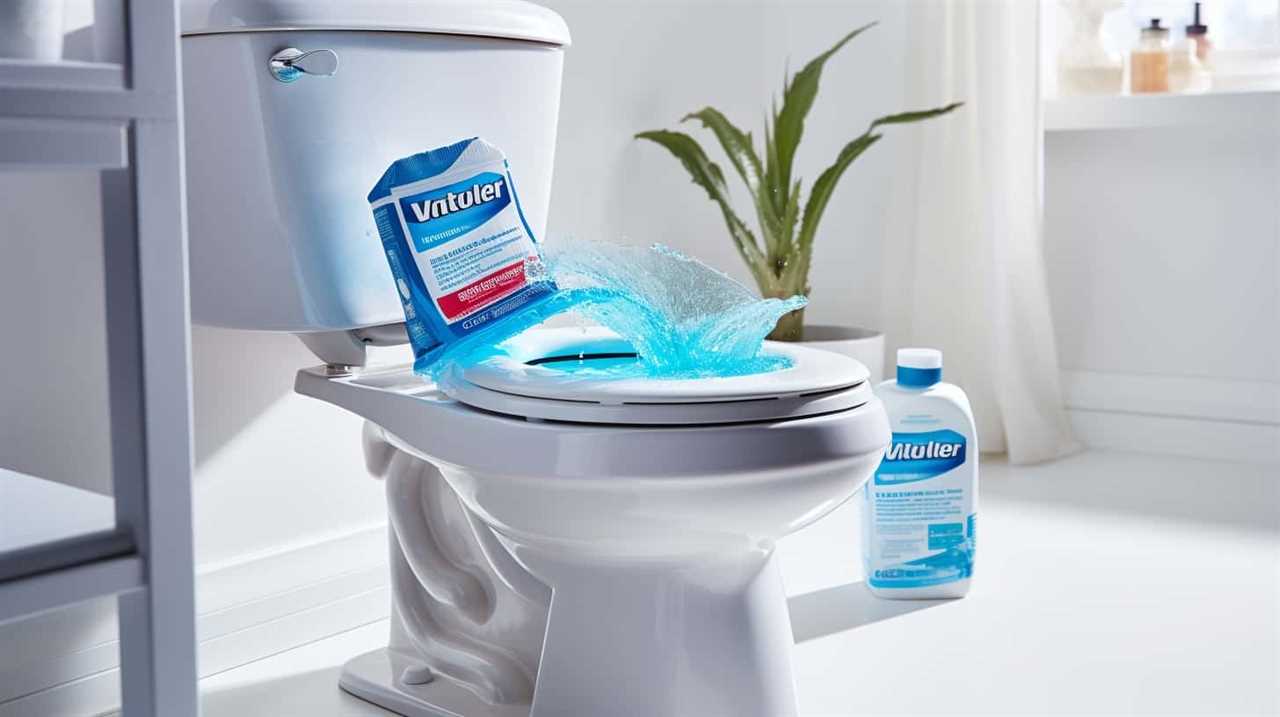
Risks to Plumbing and Sewer Systems
As we continue the discussion on the environmental impact of flushing wipes, it’s important to address the risks that these products pose to plumbing and sewer systems. Flushing wipes down the toilet can lead to serious risks to the infrastructure and result in costly repairs. Here are three specific risks associated with this practice:
- Clogging: Wipes, especially those labeled as ‘flushable,’ don’t break down easily like toilet paper. They can accumulate in pipes and sewer lines, causing blockages that can disrupt the flow of wastewater.
- Sewer backups: When wipes clog the sewer system, it can lead to sewage backups in homes, businesses, and even entire neighborhoods. This not only poses health risks but also requires expensive repairs to fix the damage.
- Overloading treatment plants: Wipes that make their way to water treatment facilities can overload the system’s capacity to filter out solids, leading to malfunctions and increased operational costs.
Considering these risks to infrastructure and the potential cost of repairs, it’s crucial to find alternative disposal methods for wipes.
Now, let’s explore the effects of flushing wipes on water treatment facilities.
Effects on Water Treatment Facilities
Now, let’s delve into how flushing wipes down the toilet affects water treatment facilities. When wipes are flushed, they can cause significant problems for these facilities.

One of the main concerns is water pollution. Wipes don’t break down easily like toilet paper, so they can clog pipes and pumps in the treatment process. This can lead to backups and overflows, resulting in untreated wastewater being released into the environment.
Additionally, wipes can accumulate in screens and filters, reducing the efficiency of the treatment process. This not only increases the cost of operations but also increases the risk of pollutants entering our waterways.
Therefore, it’s crucial to dispose of wipes properly in the trash to avoid clogging issues and water pollution in our treatment facilities.
Alternatives to Flushing Wipes
We often find ourselves wondering about alternative methods for disposing of wipes instead of flushing them down the toilet. Fortunately, there are several eco-friendly options and reusable alternatives available that can help us reduce waste and protect the environment.
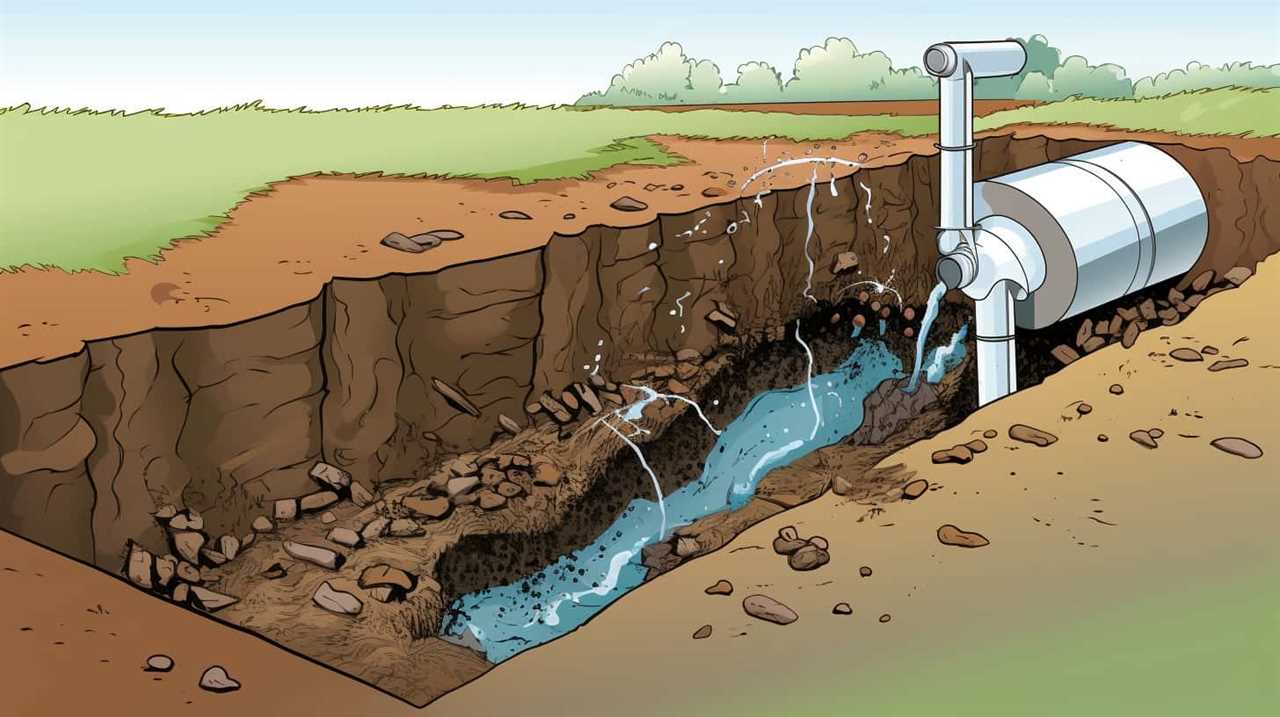
Here are three options to consider:
- Use biodegradable wipes: Look for wipes that are specifically labeled as biodegradable. These wipes are designed to break down naturally over time, reducing their impact on the environment.
- Switch to reusable cloth wipes: Consider using reusable cloth wipes instead of disposable ones. These can be made from soft, absorbent materials like cotton or bamboo and can be washed and reused multiple times, reducing waste and saving money in the long run.
- Opt for toilet paper: In many cases, wipes are used as an alternative to toilet paper. However, using toilet paper is a more sustainable option as it’s specifically designed to break down quickly in water and is less likely to cause blockages in sewage systems.
Proper Disposal Methods for Wipes
To properly dispose of wipes, it is important to follow specific guidelines that ensure minimal environmental impact and prevent potential blockages in sewage systems. While flushing wipes down the toilet is not recommended, there are alternative methods that can be used for their proper disposal. One option is to recycle wipes that are made from recyclable materials. Many communities have recycling programs in place that accept certain types of wipes. Another option is composting wipes that are biodegradable. These wipes can be added to a compost pile or bin, where they will break down naturally over time. By recycling or composting wipes, we can reduce the amount of waste that ends up in landfills and minimize the negative impact on the environment.
| Disposal Method | Environmental Impact |
|---|---|
| Recycling | Minimal |
| Composting | Minimal |
Frequently Asked Questions
Are All Types of Wipes Equally Harmful to the Environment When Flushed Down the Toilet?
Different types of wipes have varying degrees of harm to the environment when flushed down the toilet. Flushing wipes can lead to clogged pipes, sewage backups, and water pollution, posing serious consequences for our ecosystems.
Can Flushing Wipes Down the Toilet Cause Blockages in Household Plumbing?
Flushing wipes down the toilet can lead to potential plumbing issues. They can cause blockages and clog pipes, resulting in costly repairs. Additionally, the environmental impact of flushing wipes is significant, as they can contribute to sewer backups and pollution.

Do Water Treatment Facilities Have Effective Systems in Place to Remove Wipes From Wastewater?
Water treatment facilities utilize advanced technology to effectively remove wipes from wastewater. However, flushing wipes down the toilet can still have a negative environmental impact as they may clog pipes and contribute to the buildup of non-biodegradable waste.
What Are Some Alternative Methods of Disposing of Wipes That Are Safe for the Environment?
Eco friendly disposal options for wipes include throwing them in the trash or using biodegradable wipes. Proper disposal methods are crucial to protect the environment and prevent clogged pipes and sewage backups.
Can Wipes Be Composted or Recycled?
Composting wipes can have numerous benefits, such as enriching the soil and reducing waste. However, not all wipes are compostable, so it’s important to check the packaging. Recycling options for wipes may vary depending on the materials used.
Conclusion
In conclusion, while it may be convenient to flush wipes down the toilet, it isn’t okay due to the significant environmental impact, risks to plumbing and sewer systems, and effects on water treatment facilities.

Despite claims of ‘flushable’ wipes, they can still cause clogs and damage to infrastructure.
To protect the environment and maintain proper functioning of our systems, it’s best to dispose of wipes in the trash or explore alternatives such as biodegradable options.
With an impeccable eye for detail and a passion for bathroom-related, Ava leads our editorial team gracefully and precisely.
Under her guidance, Best Modern Toilet has flourished as the go-to resource for modern bathroom enthusiasts. In her free time, you might find Ava exploring antique shops and looking for vintage bathroom fixtures to add to her collection.
-

 Bathroom Enhancements2 months ago
Bathroom Enhancements2 months agoWill Hot Bath Lower Blood Pressure
-

 FAQ - Advanced Bathroom Queries3 months ago
FAQ - Advanced Bathroom Queries3 months agoWhich Countries Use Bidets the Most
-
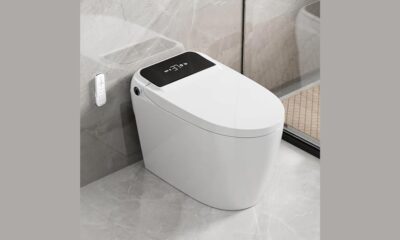
 Reviews1 month ago
Reviews1 month agoLDian Smart Toilet Review [2024]
-
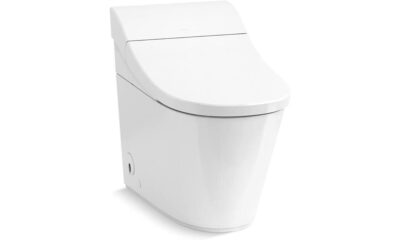
 Reviews2 months ago
Reviews2 months agoKohler Innate Smart Toilet Review [2024]
-
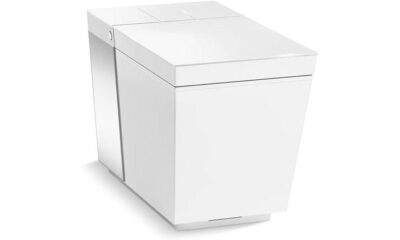
 Reviews2 months ago
Reviews2 months agoKohler NUMI 2.0 Smart Toilet Review [2024]
-
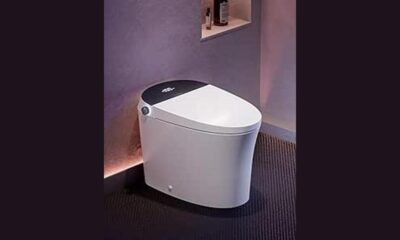
 Reviews2 months ago
Reviews2 months agoCANEST Smart Toilet Review: The Ultimate Bathroom Upgrade [2024]
-
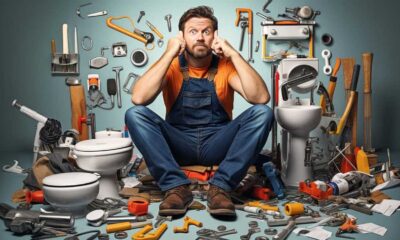
 Toilet Types3 months ago
Toilet Types3 months agoAre Bleach Tablets Bad for Your Toilet
-
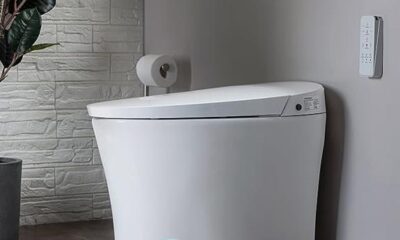
 Reviews2 months ago
Reviews2 months agoWoodbridge B0970S Smart Bidet Toilet Review [2024]
